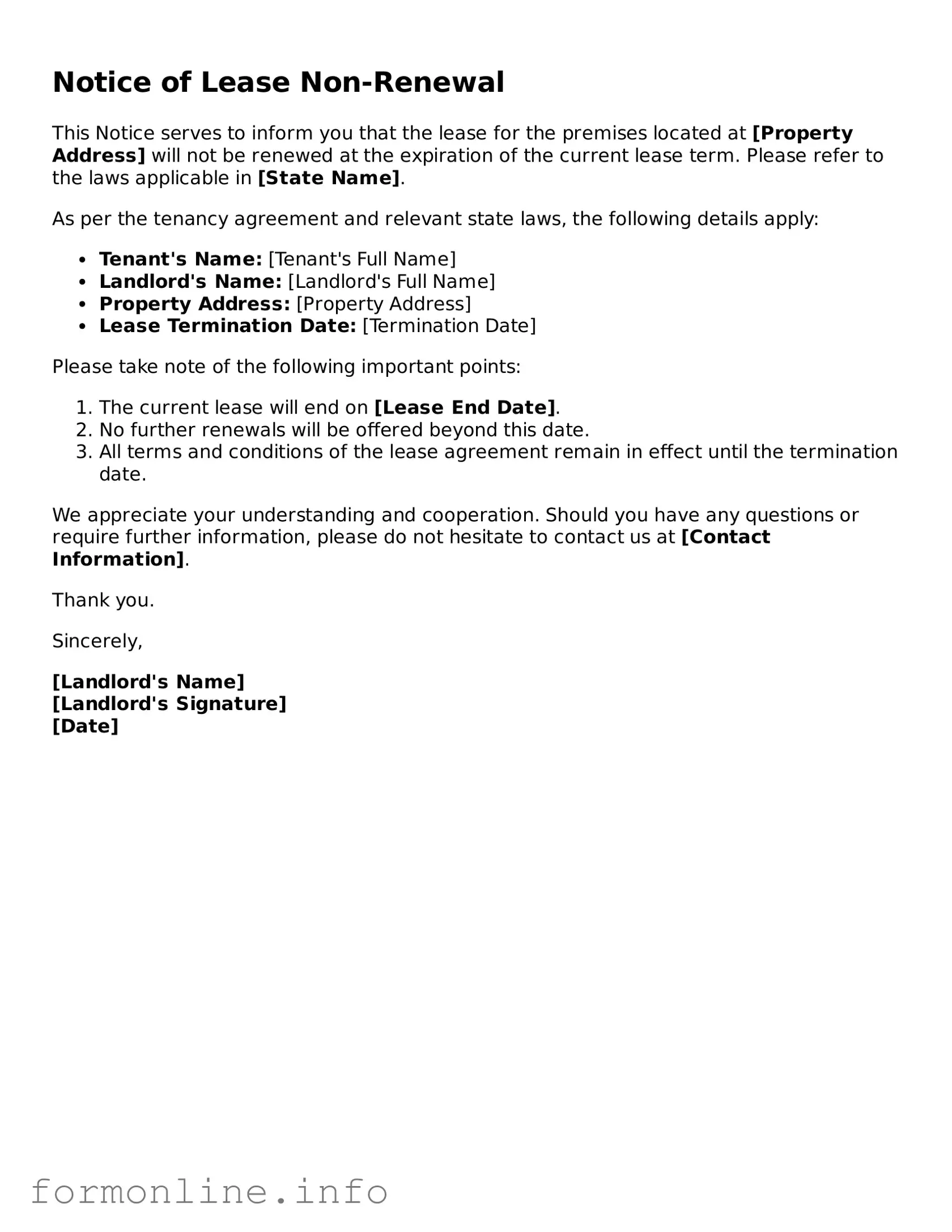Printable Notice of Lease Non-Renewal Form
The Notice of Lease Non-Renewal form is a document used by landlords or tenants to officially inform the other party that the lease will not be renewed at the end of its term. This form is crucial for ensuring that both parties are aware of the decision and can plan accordingly. To get started on your Notice of Lease Non-Renewal, fill out the form by clicking the button below.
Prepare Form Online
